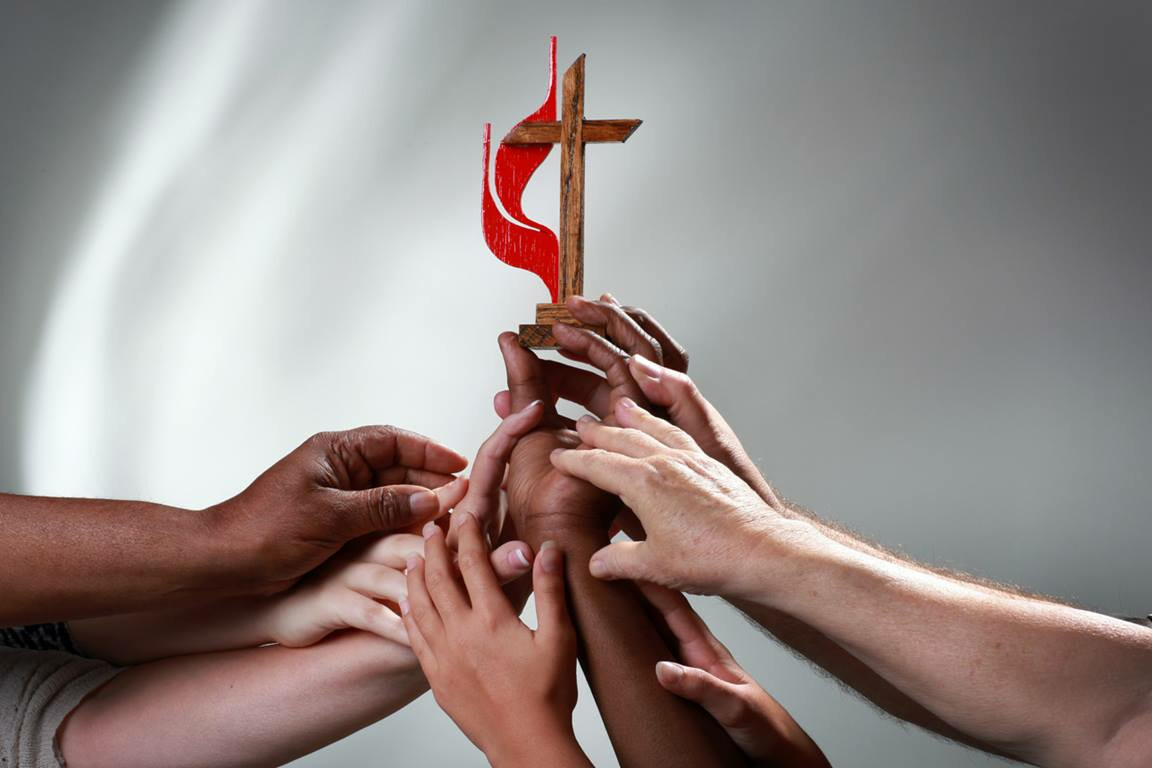
It was April 27, 2025. We had just heard the news that Pastor Meghan was being appointed to complete her coursework for Master of Education in Clinical Mental Health Counseling and Pastor Dave was being appointed to Trinity UMC in McLean. There were, understandably, looks of shock and sadness as I greeted folks as they left the church that day.
Yet, there were two separate couples at two different times on the same day who shared something interesting. One of the couples had previously been Presbyterian, and the other had been Lutheran. Each of these traditions “call” their pastors; pastors aren’t sent by a bishop. Yet, each of these couples shared basically the same thing: “We are really sad to see Pastors Dave and Meghan leaving. They’ve been really important to us, but I really like your system better. In the tradition we came from, if a pastor left, we’d have to secure an interim pastor. Then we had to have a time of discernment to see what we wanted in a new pastor. Then we’d have to create a search committee. Then we’d have to try to find people to apply. Then we’d have to have them interview and guest preach, and before you knew it, often years had passed. Sometimes we went through multiple interim pastors, too. These transitions were often difficult, and many times we lost a lot of momentum and people in the meantime. At least here, we already know who is coming. That has got to make for a better transition.”
The United Methodist itinerant system that is bringing Pastors Brian Johnson and Madison Ailinger to us is just one aspect of what we call the United Methodist connectional system – a fundamental aspect of who we are as Methodists in the Wesleyan tradition.
At its roots, United Methodist polity is shaped by a connectional system that “is multi-leveled, global in scope, and local in thrust,” i but does more than simply connect individual churches and charges with one another. It is a way of maintaining very important relationships for the overall good and continuance of the mission of the Church. It provides commonality and sharing of the UM traditions of faith such as: our guiding doctrines; a constitution with episcopal oversight; the shared and inclusive mission of “making disciples of Jesus Christ for the transformation of the world;” and our methodological ways of being the church. ii It also provides for the various councils, boards, and agencies that help to support and empower churches and extension ministries.
At the heart of the United Methodist connection is what John Wesley called Christian conferencing. At its most basic, Christian conferencing is being in relationship and conversation with other Christians, whether in small groups, Bible studies, or church meetings. But such conferencing can take on a more formal structure to bring different people together to consider where the church has been and where God is calling the church. Thus, conversation, discernment, and decision-making take place through Charge or Church Conferences (in the local churches) or District Conferences, Annual Conferences, Jurisdictional Conferences, and General Conferences (each has equal numbers of laity and clergy from local churches). By the way, the General Conference is the only body that can officially speak for the United Methodist Church as a whole.
As already alluded to, the system of itinerancy is an important part of connectionalism as ordained and provisional Elders (Pastors Dave, Meghan, and Brian are ordained Elders; Pastor Madison is currently on the journey toward ordination as Elder)) are appointed to local churches or extension ministries. In this system, the Bishop, in conversation with the Cabinet (the District Superintendents and Assistant to the Bishop), the clergyperson, and the local church or ministry, seeks to match the gifts and graces of the clergy with gifts, graces, needs, and calling of the congregation or ministry. iii This is to be an open process in which discrimination is not allowed.
This process helps makes possible change of experience and outlook. A new congregation provides this for the pastor, and a new pastor provides this for a congregation. Both parties grow in their ministry and hold each accountable to the nature and mission of the church. Though United Methodists share a common doctrine, polity, and tradition, this process allows appointees and congregations to continually see these in new ways through fresh or different eyes.
As an ordained Deacon, I am not itinerant. In other words, I am not moved by the Bishop, but I have a role to play in this system. Through years of ministry, I have sought to provide consistency and stability for a congregation going through a new appointment. Part of that has been providing pastoral care for those grieving while providing instruction on this process that may be new to newer congregants. Similarly, I can provide a foundation of support and institutional knowledge for the incoming elders.
Of course, our connectional system is not perfect. There is always room for improvement, but through this system, every local church is connected to United Methodist churches and agencies that share the calling of mission and ministry, allowing us through relationship to carry out God’s work far more fully than any one local church or person could alone.
I’m glad you are a part of this connection!
~ Deacon Troy
i The United Methodist Church, The Book of Discipline of the United Methodist Church 2020/2024 (The United Methodist Publishing House, 2024), 98.
ii The United Methodist Church, The Book of Discipline of the United Methodist Church 2020/2024, 98.
iii The United Methodist Church, The Book of Discipline of the United Methodist Church 2020/2024, 357.

